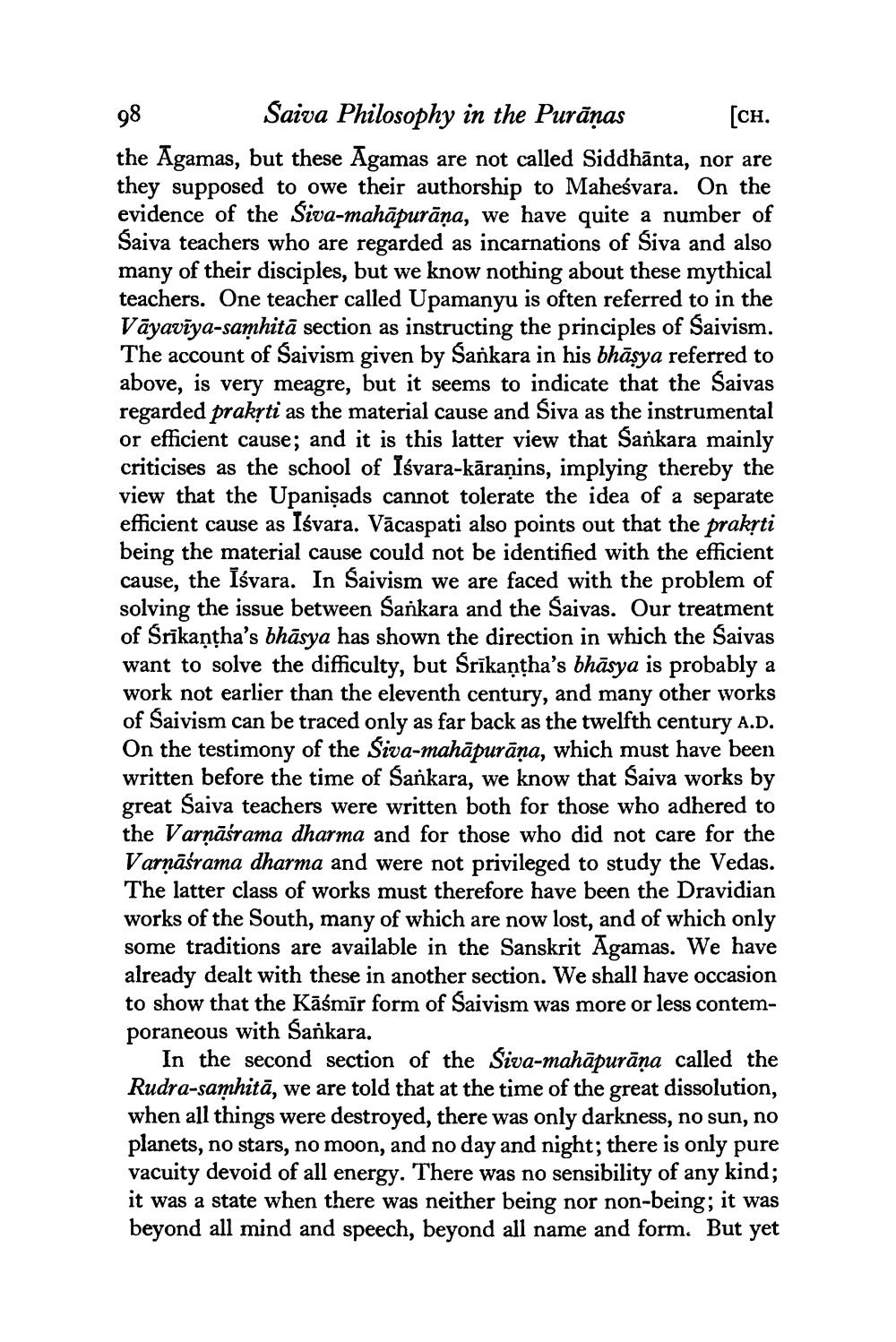________________
98
Saiva Philosophy in the Purānas [CH. the Agamas, but these Agamas are not called Siddhānta, nor are they supposed to owe their authorship to Maheśvara. On the evidence of the Siva-mahāpurāņa, we have quite a number of Saiva teachers who are regarded as incarnations of Siva and also many of their disciples, but we know nothing about these mythical teachers. One teacher called Upamanyu is often referred to in the Vāyavīya-samhitā section as instructing the principles of Saivism. The account of Saivism given by Sankara in his bhāsya referred to above, is very meagre, but it seems to indicate that the Saivas regarded prakrti as the material cause and Siva as the instrumental or efficient cause; and it is this latter view that Sankara mainly criticises as the school of Isvara-kāraņins, implying thereby the view that the Upanişads cannot tolerate the idea of a separate efficient cause as Išvara. Vācaspati also points out that the praksti being the material cause could not be identified with the efficient cause, the Iśvara. In Saivism we are faced with the problem of solving the issue between Sankara and the Saivas. Our treatment of Srikantha's bhāsya has shown the direction in which the Saivas want to solve the difficulty, but Śrīkantha's bhāsya is probably a work not earlier than the eleventh century, and many other works of Saivism can be traced only as far back as the twelfth century A.D. On the testimony of the Siva-mahapurāna, which must have been written before the time of Sankara, we know that Saiva works by great Saiva teachers were written both for those who adhered to the Varņāśrama dharma and for those who did not care for the Varņāśrama dharma and were not privileged to study the Vedas. The latter class of works must therefore have been the Dravidian works of the South, many of which are now lost, and of which only some traditions are available in the Sanskrit Agamas. We have already dealt with these in another section. We shall have occasion to show that the Kāśmīr form of Saivism was more or less contemporaneous with Sankara.
In the second section of the Siva-mahāpurāņa called the Rudra-samhitā, we are told that at the time of the great dissolution, when all things were destroyed, there was only darkness, no sun, no planets, no stars, no moon, and no day and night; there is only pure vacuity devoid of all energy. There was no sensibility of any kind; it was a state when there was neither being nor non-being; it was beyond all mind and speech, beyond all name and form. But yet




